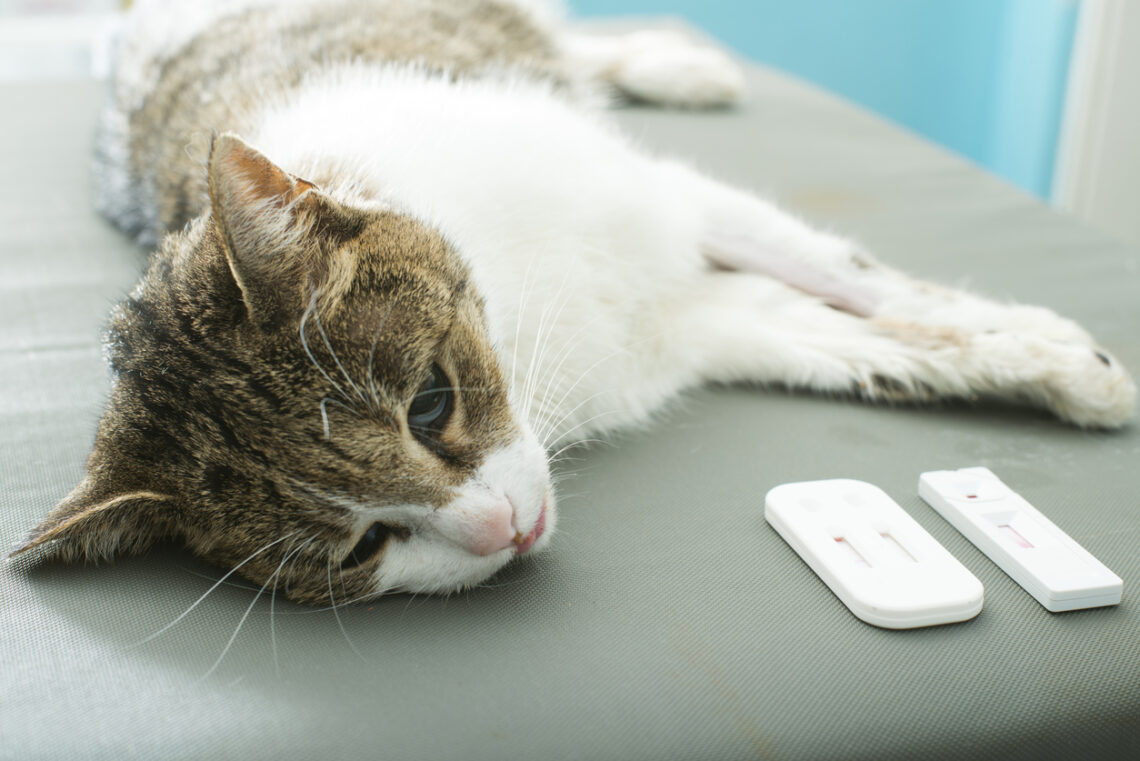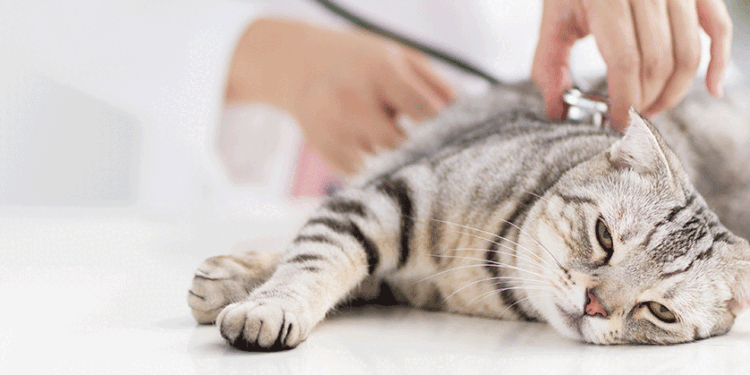If the body temperature of the velvet paw exceeds 39.2 degrees, the cat has a fever. In addition to stress and high ambient temperatures, serious illnesses can be the cause. Inflammatory processes, infections, or even parasite infestation come into consideration. The following text explains the causes and symptoms and provides treatment tips.
Anatomical mechanisms trigger fever in cats
The average body temperature of house tigers ranges between 38 and 39 degrees Celsius and can be higher in kittens than in adult cats. It is regulated by the hypothalamus, the temperature center in the diencephalon of the animal. This receives information from temperature receptors distributed over the skin and triggers corresponding reactions in the muscles and sweat glands.
If the receptors report too high temperatures, the musculature of the veins relaxes. The result is an expansion of the vessels and heat-associated release.
When the temperature is too low, the musculature of the blood vessels tightens. The resulting vasoconstriction can lead to chills or shivering. There is increased heat production, which can lead to fever.
Read More: Natural treatments for cat worms
Is fever an illness?
Fever is not an illness, but a natural reaction of the immune system to harmful environmental influences, stress, or the penetration of pathogens into the organism. It causes an increase in the cat’s metabolism so that pathogens can be fought naturally. Therefore, it is not only negative if your cat has a fever. The immune system of the velvet paw activated in this way is strengthened for a longer period of time.
Only if the organism does not manage to fight the invaders effectively does the animal’s body temperature rise to over 40 degrees and can cause serious damage to the cat.
Fever in cats can be constant or fluctuate over several days. Depending on the duration, three types of fever are distinguished:
- Ephemeral fever: the animal has a fever for just one day.
- Acute fever lasts for eight to 14 days.
- The vet speaks of subacute fever when the temperature rises for two to three weeks.
- If it lasts longer than three weeks, your cat will suffer from chronic fever.
Symptoms of your cat having a fever

Fever manifests itself in cats with the following symptoms and behavioral changes.
- Exhaustion, exhaustion, reluctance to move, and stiff joints; the animal sleeps a lot,
- loss of appetite,
- much thirst, caused by high water loss,
- Tremble,
- dry nose mirror,
- panting or rapid breathing,
- the animal hides
- Vomit
- Discontinuation of so-called fever feces, which is noticeably dry and firm, but also diarrhea,
- uncharacteristic aggressiveness.
Fever measurement in velvet paws

Cats should always be measured rectally, i.e. in the anus, because the animal’s intestines provide precise information about the body’s core temperature. That sounds easier than it is. After all, house tigers perceive everything that happens behind their backs and cannot be observed as a danger. Stroking and loving persuasion is therefore the first step.
For the measurement itself, which is best done with a digital clinical thermometer, the cat is placed on a table. After lifting the tail, the thermometer, the tip of which you previously covered with petroleum jelly should grease, gently and slowly inserted into the anus. After a few seconds, the procedure is over and you can read the body temperature of your animal.
The cat has a fever – possible causes
If your house tiger has a short-term elevated temperature, it does not have to be caused by a serious illness. Elevated ambient temperatures, excitement, or stress increase the animal’s heat level. When kittens fight with littermates or romp for long periods of time, their body temperature rises rapidly. The same applies to seniors who have taken a nap near the heater. In these cases, the vet does not speak of fever, but of hyperthermia, or overheating.
Persistent fever of more than 39.2 degrees makes a prompt visit to the vet absolutely necessary (to the costs incurred ).
The most common causes for this can be:
- Bacterial inflammation of internal organs or the skin,
- Viral diseases such as cat flu, leukosis, or Covid19,
- parasite infestation,
- inflamed bite injuries, chronic inflammation or tumors,
- Poisoning,
- abscesses,
- autoimmune diseases,
- Side effects of medication or vaccinations.
First aid

If your cat has a serious fever, the actual therapy, such as antibiotics, must be left to the vet. However, you can take steps to alleviate this:
- wet fur,
- cool the animal with damp towels,
- make sure the cat drinks a lot,
- never administer medicines of human medicine.
FAQ
At what temperature does my cat have a fever?
At a body temperature of more than 39.2 degrees.
What symptoms indicate that the cat has a fever?
Tiredness, tremors, loss of appetite, constant thirst, tremors, aggressiveness, crawling, accelerated breathing.
The cat has a fever – what are the causes?
Bacterial inflammation, viral infections, parasitic infestations, and abscesses, among others.
How can I measure fever in a cat?
Rectally with a digital thermometer, the tip of which is greased with petroleum jelly.




